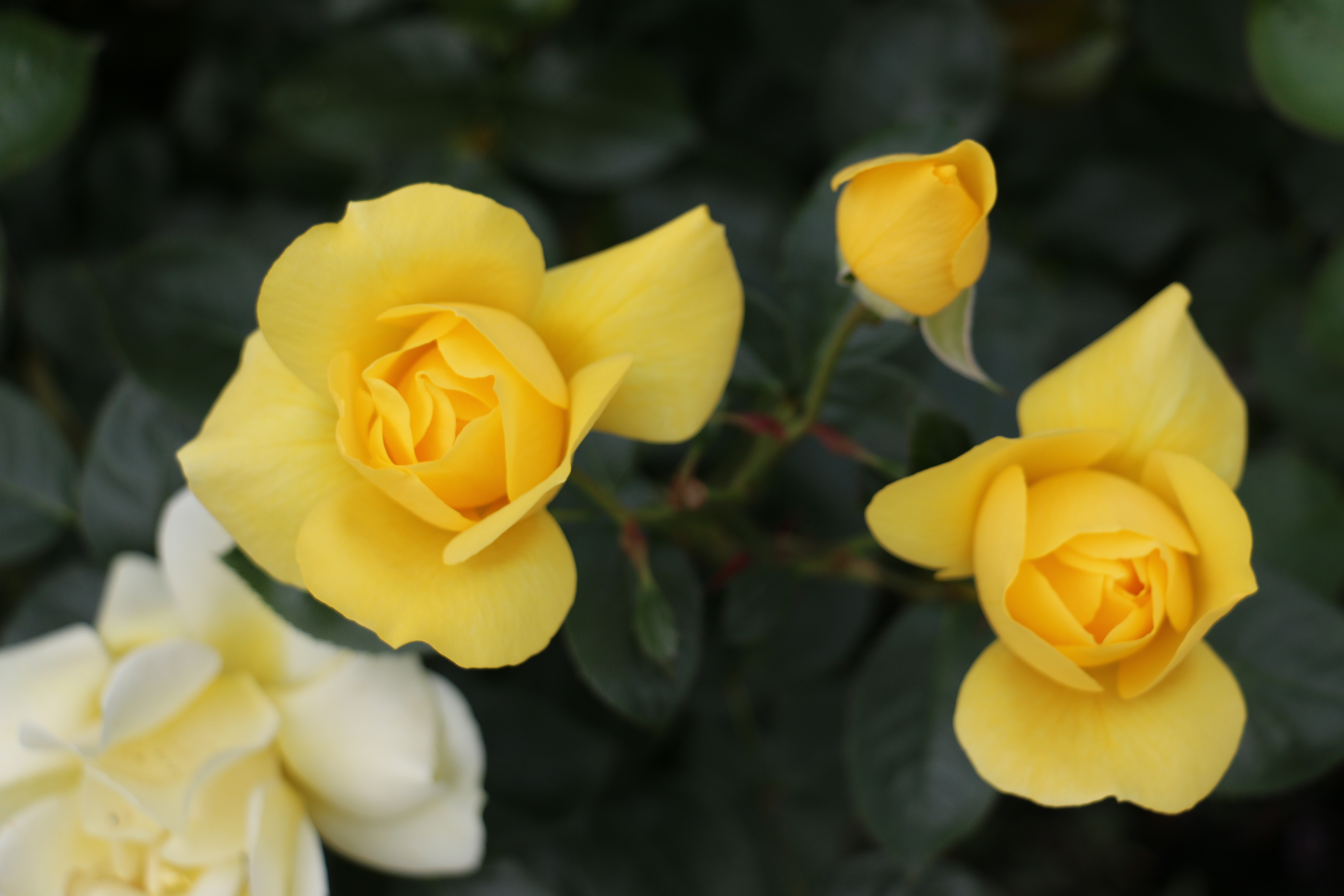Mulching annually helps suppress weeds and conserve moisture. Organic materials such as sawdust and bark contribute to soil structure as they decompose but keep mulching material away from the trunk. The first summer and autumn after planting is critical for young plants; water thoroughly during dry periods. Pests and diseases can have serious debilitating effects on young plants; check regularly. A good rule of thumb is to give your roses one deep watering each week in dry times this will ensure the roots look for water themselves. Check stakes and ties for chafing and constriction and loosen if required as the plant grows.
As for feeding your roses, most varieties will do very well with a single feeding in early spring when the leaves start to bud. Give a second feeding just as the first big bloom starts to develop and one more in the middle of the summer to promote later flushes. Use a quality fertiliser (preferably organic) which contains a balance of major nutrients (NPK) and trace elements. The fertiliser should be applied at least once a month – small amount often – with fortnightly applications of liquid seaweed over the foliage. Mulching with well-rotted manure is an alternative.
Pruning roses is pretty easy and for the most part, you are pruning for health and shape. Prune in June or July while the plants are dormant before the leaves open up as it will make it much easier to see what you are doing. 70% of the rose plant should be pruned. Always start off by removing the deadwood, along with any canes that look diseased, any very old wood can be removed back to the crown and the bush pruned to shape. Cut back any lateral canes that overlap one another once the leaves open up. These overlapping canes will compete with one another for sunlight. Shape the rose to whatever general shape you desire but prune to outward facing buds.
Take the opportunity to also rake up dead leaves and debris from around the base of the plant as these can lead to pests and diseases like blackspot re-infecting your plant for the following season. Deadhead regularly throughout the flowering period to help encourage more blooms.




.jpg?width=1200&height=1200&v=1d4024dceb89e50)

.jpg?width=1200&height=1200&v=1d5569224d63650)
 .jpg?width=1200&height=1200&v=1d4024df6ce2770)
.jpg?width=1200&height=1200&v=1d55676a892f2b0)
 .jpg?width=1200&height=1200&v=1d4024e3b65f7f0)